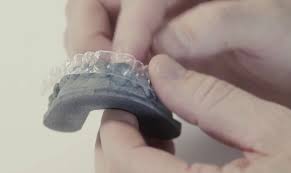Why 3D Printing Benefits the Medical Industry
- Robert Bleier

- Oct 1
- 3 min read
3D Printing for the Healthcare and Medical Industry
The medical and healthcare industry is increasingly looking to 3D printing as an innovative way to produce tools, equipment, prosthetics, insoles, and training technology. The use of 3D printing technology for developing on-demand, custom manufacturing, is creating efficiencies in unique ways, saving both time and money, all while literally saving lives.
3D Printed Models for Healthcare and Medical Training

Utilizing common medical technologies such as CT or MRI scans, 3D printing can efficiently produce precise models of organs or other body parts. These models allow surgeons, medical professionals, and patients to effectively prepare for medical procedures. 3D printed models allow for increased preparation and pre-surgery strategies, increasing the success of surgeries, while also creating patient understanding and comfort, decreasing anxiety and fear. From an economic perspective, the 3D printed modeling approach also increases the speed and efficiency of procedures, something that hospitals with limited operating rooms are increasingly interested in.
Creating Medical Tools and Equipment with 3D Printing

The medical industry is consistently innovating, working to find new solutions to complicated challenges. 3D printing is the perfect fit for an industry searching for custom solutions that require an iterative process. Developing medical tools, instruments, and equipment using 3D printing means prototypes can be developed at rapid speeds and they can also easily be updated and changed to suit changing needs. In an industry that deals in life and death, precision and efficiency are essential, 3D printing provides both to the medical sector.
3D Printing Custom Medical Solutions

One of the greatest differentiators between 3D printing and traditional manufacturing is the ability to create custom solutions efficiently. In the medical sector, the ability to develop custom solutions will have far-reaching implications. Two clear examples of the potential impact of 3D printing can be found in prosthetics and insoles.
When it comes to custom prosthetics, there are a variety of considerations to be implemented. For instance, if a child loses and limb and requires a prosthetic, they will routinely need to replace that prosthetic as they grow – this is costly and challenging for many. 3D printing can now allow these replacements to be custom-developed with greater efficiency and lower costs. Additionally, 3D printing ensures that these prosthetics perfectly fit when connecting to the patient’s body. These may seem like simple or obvious considerations, but traditional manufacturing has not allowed most individuals to receive these fully customized solutions.
A more common implementation of custom medical materials is insoles. Whether you are developing a solution for a lifelong challenge or simply a corrective insole to improve posture or stride, 3D printing offers the ability to customize insoles to a patient’s needs. What would previously have required extensive moldings and processes, is now as simple as a scan and 3D printing. The precision and efficiency of this procedure serve to make insoles more readily available to those who require them.
Leverage 3D printing for your own medical innovation
Tempus 3D is a Canadian company providing world-class technology, services, and support to manufacturers of all sizes. We specialize in designing and producing on-demand manufacturing of industrial plastics with industry-leading 3D printing technology. One of the many industries that we are proud to serve is the healthcare or medical sector. Keep reading to learn more about how 3D printing is changing the landscape of healthcare products, parts, training, and services. Contact a member of our team to learn more about how we can support your next part or product design.
To learn more about how Tempus 3D can support your next medical or healthcare project, contact us today!







